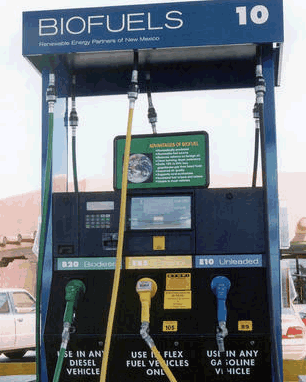
Biofuels are fuels largely derived from living organisms that use the sun as their main energy input. Energy may be put into planting, fertilizing, harvesting, and processing the crops, but all of the energy, in the final plant product, comes from the sun. Through the process of photosynthesis plants convert solar energy into chemical forms of energy (carbohydrates, fats, etc.). Plant convert solar energy into a chemical form more usable as a fuel.
Biofuels are considered carbon neutral. That is, they release no net amount of carbon dioxide into the atmosphere.
This is because the carbon dioxide that is released during combustion was originally absorbed from the atmosphere during the process of photosynthesis and hence no extra CO2 is pumped into the atmosphere.
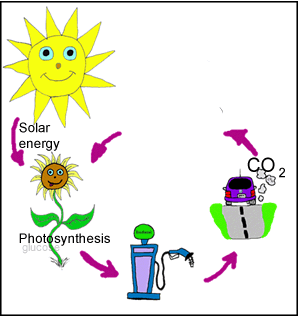
The process of photosynthesis can be summarised by the equation below.
6H2O + 6CO2 => C6H12O6 + 6O2
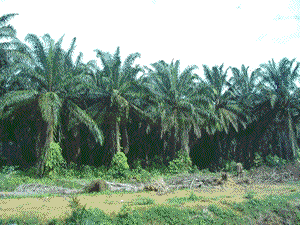
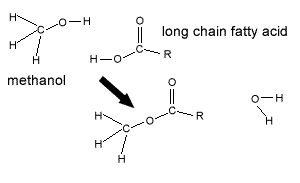
Vegetable oils are sometimes used to provide the fatty acids for biodiesel formation. A number of these oils are listed in the table on the right.
1) Why, in the harsh European winter, is a low melting temperature ideal?
2) What is the trend between melting temperature and number of double bonds? Explain
3) Why does the melting temperature increase as the number of carbon atoms in the molecule increases?
| Name of oil | Number of carbons | Number of double bonds | Melting temperature |
| Caprylic | 8 | 0 | 16.5 |
|---|---|---|---|
| Lauric | 12 | 0 | 44 |
| Palmitic | 16 | 0 | 63 |
| Oleic | 18 | 1 | 16 |
| Linoleic | 18 | 2 | -5 |
| Linolenic | 18 | 3 | -11 |
A process known as transesterification is commonly used to produce biodiesel. Chemically, transesterification is the process of exchanging the alkyl group of an ester with another alkyl group, from a different alcohol.
Vegetable oil contains fatty acids bonded to glycerol to form triglycerides.
In the case of biodiesel, a vegetable oil ester is combined with a simple alcohol, methanol, and a catalyst (NaOH), resulting in the breakup of the triglyceride ester to form glycerol and three methyl esters (biodiesel) as shown on the right.
4) Rudolf Diesel invented the diesel engine which was initially designed to run on vegetable oil. Vegetable oil is composed of triglycerides, as shown on the right. In colder climates vegetable oil is not a viable fuel as it becomes very viscous and even solidifies in the fuel line. Some vehicles have heating coils that preheat the vegetable oil before it enters the fuel lines. Why is it necessary to convert the vegetable oil into biodiesel (methyl esters)?
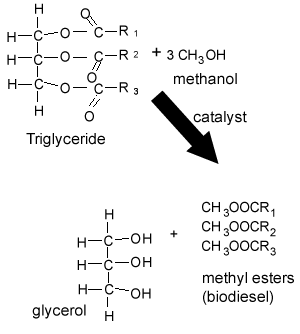
Continue with an activity to make biodiesel
Continue with Ethanol "The False Promise of Biofuels"
.